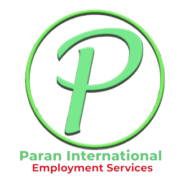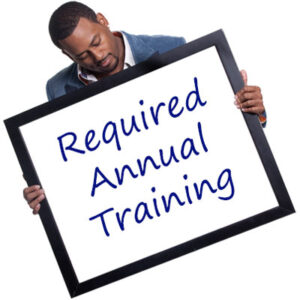Trainings & Upcoming Events
Transform: Driving Business Results through Learning
Upcoming Events

In today’s rapidly changing business landscape, organizations must invest in their most valuable asset—their employees—to stay competitive and achieve sustainable growth. To meet evolving challenges, organizations require effective HR/IR training and development programs that align employee skills with business needs, foster engagement and productivity, and cultivate a culture of continuous learning. In this regard, Paran International Training Centre (PITC) has developed a comprehensive Training Calendar for the year 2025, designed to guide organizations in their HR/IR Training and Development Budget Planning and help them implement training programs that achieve these objectives. This Training Calendar outlines the primary objectives and strategies to ensure organizations can maximize the benefits of training initiatives.
- Customized and Targeted Approach: Our Training Calendar adopts a customized and targeted approach, allowing organizations to tailor the training programs to their specific needs. By incorporating their own topics, recommending course designs, and adjusting timetables to align with operational requirements, organizations can ensure that the training addresses their unique challenges and objectives.
- Collaboration with Global Training Partners: We foster collaboration with international training service providers, leveraging our network of global partners. This collaboration allows us to offer extensive training and technical skills programs that bring diverse expertise and perspectives to the table. By tapping into this international network, organizations gain access to a wider range of training resources and can benefit from best practices and innovative approaches from around the world.
- Continuous Evaluation and Feedback: Our Training Calendar emphasizes continuous evaluation and feedback mechanisms to ensure the effectiveness and relevance of the training programs. Through robust evaluation processes and gathering feedback from participants, we can identify areas for improvement and make necessary adjustments. This iterative approach allows us to continuously enhance the training offerings, ensuring they remain aligned with evolving needs and deliver tangible results for organizations
1. Strategic Development:
Our Training Calendar aims to assist organizations in aligning employee needs with evolving business requirements and anticipated technical skills for the year 2025. By identifying skill gaps, conducting needs assessments, and planning targeted training initiatives, organizations can strategically develop their workforce to meet the changing demands of the industry and drive overall organizational success.
2. Employee Engagement and Productivity:
We are committed to implementing comprehensive HR/IR Training Programs that contribute to high employee engagement, satisfaction, job clarity, building positive organizational culture and productivity. By providing training opportunities that enhance job satisfaction, foster a positive work environment, and promote personal and professional growth, organizations can create an engaged and motivated workforce that drives innovation and achieves organizational goals.
3. Leadership and Managerial Skills:
Our Training Calendar focuses on enhancing leadership capabilities and developing effective managerial skills. By offering training programs that equip leaders with the necessary tools to inspire and motivate teams, cultivate a positive work culture, and drive organizational growth, organizations can build a strong leadership pipeline and ensure the success of their business.
4. Adaptability and Digital Literacy:
The Training Calendar recognizes the importance of equipping employees with essential digital literacy skills and technological competencies. In today’s digital era, organizations need to embrace technological
advancements and empower their workforce to adapt to new tools and platforms. By offering training programs that enhance digital literacy and tech skills, organizations can foster adaptability and ensure employees can leverage digital tools effectively to drive innovation and efficiency.
5. Talent Development and Well-being:
Our Training Calendar emphasizes the importance of talent development, retention, and employee well-being. By promoting a culture of continuous learning, providing succession planning strategies, and prioritizing employee well-being and resilience, organizations can attract top talent, foster employee loyalty, and create a diverse and inclusive work environment that nurtures both professional and personal growth.
List of Training Programmes
2025-CORPORATE-TRAINING-CALENDAR-FOR-PARAN-INTERNA_250201_164600.pdf (419 downloads )
2025Training-Program-For-Paran-International-Training-Centre-PITC.pdf (480 downloads )
Overview:
The Handling Error-Free Disciplinary Hearings training program aims to equip participants with the knowledge and skills necessary to conduct disciplinary hearings in a fair, transparent, and legally compliant manner. This training will provide practical guidance on preparing for disciplinary hearings, conducting the hearings, evaluating evidence, reaching fair decisions, and communicating outcomes effectively.
Training Objectives:
- Understand the purpose and importance of error-free disciplinary hearings.
- Familiarize participants with the legal and regulatory framework governing disciplinary processes.
- Provide guidance on preparing for disciplinary hearings, gathering evidence, and providing proper notice.
- Equip participants with the skills to conduct disciplinary hearings with professionalism and impartiality.
- Evaluate evidence and consider mitigating factors in decision-making.
- Communicate the outcomes of disciplinary hearings clearly and respectfully.
- Conduct a post-hearing review and learn from the disciplinary process.
Introduction to the Workers Committee:
- Role, responsibilities, and authority of the Workers Committee within the organization.
- Structure, composition, and election process of the committee.
- Understanding relevant labor laws, regulations, and collective bargaining agreements.
Effective Communication and Collaboration:
- Building effective communication channels between the committee and employees.
- Developing collaboration skills within the committee to enhance teamwork.
- Promoting a positive work environment and employee engagement.
Grievance Handling and Dispute Resolution:
- Training on the committee’s role in representing and advocating for employees’ interests.
- Orientation on grievance handling processes and dispute resolution mechanisms.
- Encouraging active participation and providing resources for committee activities.
Workplace Productivity:
- Understanding the concept of productivity and its impact on organizational success.
- Identifying factors that contribute to workplace productivity.
- Effective time management, goal setting, and prioritization techniques.
- Strategies for problem-solving, decision-making, and overcoming productivity challenges.
- Stress management, work-life balance, and preventing burnout.
- Techniques for managing distractions, improving focus, and increasing efficiency.
- Promoting a culture of continuous learning, innovation, and improvement.
- Monitoring and evaluating productivity levels and progress.
- Encouraging feedback and involvement of committee members in productivity improvement initiatives.
- Introduction to Works Council and its role in the organization
- Understanding the legal framework and regulations governing Works Council
- Promoting effective collaboration and communication between management and Works Council
- Building positive relationships and trust between management and Works Council members
- Exploring the rights and responsibilities of Works Council members
- Developing a shared understanding of organizational goals and objectives
- Identifying areas of mutual interest and common challenges
- Enhancing negotiation and conflict resolution skills for Works Council members and management representatives
- Establishing effective mechanisms for information sharing and consultation
- Addressing specific topics such as working conditions, employee welfare, and organizational development
- Collaborating on decision-making processes and policy development
- Ensuring Works Council involvement in organizational change initiatives
- Establishing effective channels for feedback and employee representation
- Encouraging Works Council participation in fostering a positive work culture and employee engagement
- Promoting Works Council’s role in enhancing workplace productivity and employee well-being
- Sharing best practices and success stories from other organizations with effective Works Council structures
- Building a constructive and productive relationship between Works Council and management
- Developing strategies for Works Council and management collaboration during challenging times, such as restructuring or cost-cutting measures
- Ensuring compliance with legal requirements related to Works Council activities and information sharing
- Providing ongoing support and training opportunities for Works Council members and management representatives to enhance their effectiveness
- Building a culture of mutual respect, trust, and cooperation in the organization through the partnership between Works Council and management
a. Introduction to Retrenchment:
- Explaining the concept of retrenchment and its purpose.
- Understanding the legal and regulatory framework related to retrenchment.
- Exploring the reasons why organizations may need to implement retrenchment measures.
b. Retrenchment Policies and Procedures:
- Familiarizing employees with the organization’s retrenchment policies and procedures.
- Explaining the criteria and process for selecting employees for retrenchment.
- Providing guidance on the documentation required for retrenchment decisions.
- Exploring alternative measures to retrenchment, such as redeployment or retraining opportunities.
c. Communication and Employee Support:
- Training managers and supervisors on effective communication during the retrenchment process.
- Providing guidance on delivering sensitive news and addressing employee concerns.
- Promoting empathy and understanding towards affected employees.
- Explaining the support resources available to employees, such as counseling or job placement services.
d. Legal and Compliance Considerations:
- Understanding the legal obligations and compliance requirements during retrenchment.
- Explaining the rights of employees and the organization’s responsibilities.
- Training on compliance with notice periods, severance pay, and other legal requirements.
- Discussing the role of the Workers Committee and employee representatives in the retrenchment process.
e. Career Transition and Outplacement Support:
- Providing guidance on developing a career transition plan for retrenched employees.
- Training on job search strategies, resume writing, and interview skills.
- Exploring resources and support available for outplacement services.
- Encouraging networking and leveraging professional connections.
f. Managing the Emotional Impact:
- Addressing the emotional impact of retrenchment on affected employees.
- Training on coping strategies and resilience-building techniques.
- Providing resources for emotional support, such as counseling or employee assistance programs.
g. Post-Retrenchment Support:
- Explaining the organization’s commitment to supporting retrenched employees.
- Providing guidance on accessing unemployment benefits or welfare programs.
- Offering resources and information on retraining or upskilling opportunities.
- Understanding labor laws and regulations related to labor contracting and termination.
- Overview of different types of employment contracts and their implications.
- Familiarization with relevant provisions of collective bargaining agreements or employment agreements.
- Exploring the rights and responsibilities of employers and employees in the context of labor contracting and termination.
- Compliance with legal requirements for hiring and contracting labor, including documentation and record-keeping.
- Identifying factors to consider when selecting labor contractors or subcontractors.
- Ensuring fair and transparent contracting processes to protect the rights of workers.
- Establishing effective communication channels and mechanisms for addressing concerns related to labor contracting.
- Training on the termination process, including grounds for termination and required procedures.
- Understanding employee rights and protections during the termination process.
- Promoting fair and respectful treatment of employees during the termination process.
- Exploring alternative solutions to termination, such as redeployment or retraining opportunities.
- Developing strategies for minimizing the negative impact of terminations on affected employees and the organization.
- Training on the legal and ethical considerations when handling layoffs or mass terminations.
- Understanding the role of the Workers Committee in labor contracting and termination processes.
- Collaborating with the Workers Committee to ensure compliance with labor laws and regulations.
- Providing resources and support for committee members to address labor contracting and termination-related issues.
- Sharing best practices and case studies on effective labor contracting and termination practices.
- Practicing scenarios and role-playing exercises to enhance understanding and application of labor contracting and termination processes.
- Defining workplace sexual harassment and its various forms.
- Understanding the legal framework and regulations related to workplace sexual harassment.
- Exploring the negative impact of sexual harassment on individuals and the organization.
- Promoting a safe and inclusive work environment free from sexual harassment.
- Identifying behaviors that constitute sexual harassment and distinguishing between acceptable and unacceptable conduct.
- Educating employees on their rights and responsibilities regarding workplace sexual harassment.
- Training on the reporting and complaint procedures for addressing incidents of sexual harassment.
- Encouraging employees to report sexual harassment promptly and without fear of retaliation.
- Providing guidance on the appropriate actions to take as a witness or bystander of sexual harassment.
- Promoting empathy, respect, and cultural sensitivity in workplace interactions.
- Developing strategies for preventing sexual harassment, including bystander intervention and creating a supportive work culture.
- Raising awareness about the role of the Workers Committee in addressing sexual harassment issues.
- Collaborating with the Workers Committee to establish effective reporting mechanisms and support systems.
- Training on the responsibilities of managers and supervisors in preventing and addressing sexual harassment.
- Providing resources and support for employees who experience or witness sexual harassment.
- Conducting case studies and interactive discussions to enhance understanding and awareness of workplace sexual harassment.
- Sharing best practices and success stories from organizations that have effectively addressed workplace sexual harassment.
- Periodic refresher training to reinforce knowledge and maintain a workplace free from sexual harassment
Overview:
The Management/Supervisor Development training program is designed to enhance the knowledge, skills, and capabilities of managers and supervisors to effectively lead teams, drive performance, and achieve organizational objectives. This comprehensive training program covers key areas essential for managerial success, enabling participants to develop their leadership abilities and effectively navigate the challenges of their roles.
Training Objectives:
- Understand the role and responsibilities of managers and supervisors.
- Develop effective communication and interpersonal skills.
- Learn strategies for building and leading high-performing teams.
- Enhance decision-making and problem-solving capabilities.
- Develop skills for managing conflicts and resolving issues.
- Gain insights into effective performance management and feedback.
- Learn techniques for motivating and engaging employees.
- Develop skills for delegation and time management.
- Enhance strategic thinking and planning abilities
Overview:
The Dealing with Collective Job Action training program is designed to provide managers, supervisors, and HR professionals with the knowledge and skills necessary to effectively handle collective job actions, such as strikes, work stoppages, and other forms of organized labor protests. This program aims to equip participants with the understanding of labor relations principles, legal considerations, negotiation strategies, and conflict resolution techniques required to navigate and manage collective job actions in a fair, legal, and productive manner.
Training Objectives:
- Understand the concept and types of collective job actions.
- Comprehend the legal framework and regulations related to collective job actions.
- Identify the underlying causes and motivations behind collective job actions.
- Develop strategies for effective communication and relationship building with unions or employee representatives.
- Learn negotiation techniques and approaches for productive collective bargaining.
- Explore conflict resolution methods to mitigate tensions and find mutually acceptable solutions.
- Understand the role of HR and management in maintaining productivity during collective job actions.
- Comply with legal obligations and ensure the safety and well-being of employees during job actions.
- Develop contingency plans and strategies to minimize disruptions and resume normal operations.
Overview:
The Team Building training program is designed to enhance teamwork, collaboration, and communication within your organization. This program focuses on developing strong and cohesive teams that can work together effectively, overcome challenges, and achieve shared goals. Participants will gain insights into building trust, fostering collaboration, resolving conflicts, and improving overall team performance.
Training Objectives:
- Understand the importance of effective teamwork in achieving organizational goals.
- Develop strategies for building trust and establishing strong team dynamics.
- Enhance communication and collaboration within teams.
- Learn techniques for resolving conflicts and managing team challenges.
- Foster a culture of accountability and shared responsibility.
- Improve overall team performance and productivity.
- Strengthen team relationships and foster a positive team culture.
- Develop strategies for effective problem-solving and decision-making as a team.
- Enhance communication and collaboration across different teams and departments.
- Learn techniques for managing diverse and virtual teams.
- Foster innovation and creativity within teams.
- Develop skills for team performance evaluation and continuous improvement.
a. Occupational Safety Training:
- Introduction to occupational safety regulations and legal requirements.
- Identifying workplace hazards and implementing preventive measures.
- Training on proper use of personal protective equipment (PPE).
- Emergency preparedness and response procedures.
- Safe handling of hazardous materials and equipment.
- Ergonomics and preventing musculoskeletal disorders.
- Fire safety and evacuation protocols.
- Workplace violence prevention and de-escalation techniques.
- Machinery and equipment safety guidelines.
- Electrical safety measures and precautions.
- Reporting and investigation of workplace incidents and near misses.
b. Wellness and Mental Health Training:
- Promoting work-life balance and stress management techniques.
- Educating employees on the importance of mental health and well-being.
- Techniques for managing workplace stress and building resilience.
- Creating a supportive and inclusive work environment.
- Identifying signs of mental health issues and providing support resources.
- Encouraging healthy lifestyle choices and physical activity.
- Ergonomics and promoting good posture and movement.
- Educating employees on the benefits of regular breaks and relaxation techniques.
- Providing resources and guidance on nutrition and healthy eating habits.
- Developing strategies for fostering positive relationships and communication.
c. Health and Hygiene Training:
- Promoting general health and hygiene practices in the workplace.
- Educating employees on the importance of hand hygiene and proper sanitation.
- Preventing the spread of infectious diseases and illness.
- Training on safe food handling and storage practices.
- Educating employees on the risks of substance abuse and promoting a drug-free workplace.
- Providing information on common workplace health hazards and prevention measures.
- Promoting regular health screenings and preventive healthcare practices.
- Training on recognizing and responding to medical emergencies.
d. First Aid and CPR Training:
- Providing comprehensive first aid and cardiopulmonary resuscitation (CPR) training.
- Recognizing and responding to common workplace injuries and medical emergencies.
- Training on proper use of first aid equipment and supplies.
- CPR techniques for cardiac arrest situations.
- Managing choking incidents and other life-threatening situations.
- Ensuring employees are prepared to respond effectively in emergency situations.

